Abstract
Studies of the geographic and functional distribution of physicians rarely include race of the physicians as a study variable. For black physicians, there are some rather strong justifications for doing just that: 1) their services are directed almost exclusively to black and often medically underserved communities; 2) recent efforts to reduce constraints to medical education based on race, sex, ethnicity, and income have resulted in a substantial increase in the proportion of black medical students; 3) inferring about black physicians from information on the general population of physicians given the differences in biographical and experimental characteristics is tenuous at best. Hence, an adequate information base and focused conceptualization on the educational and career patterns of black physicians are indicated. At the policy level there is a need to clarify the relationship between equity in educational (and career) opportunity and efforts to redistribute physicians.
Full text
PDF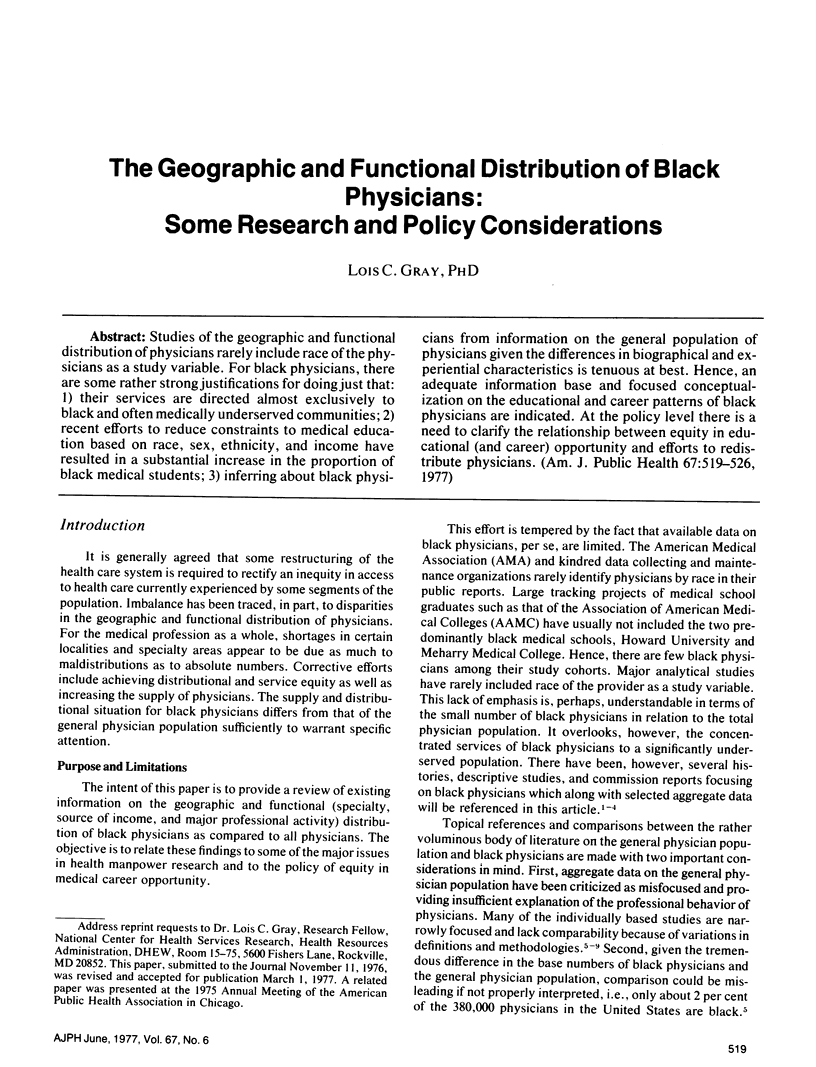
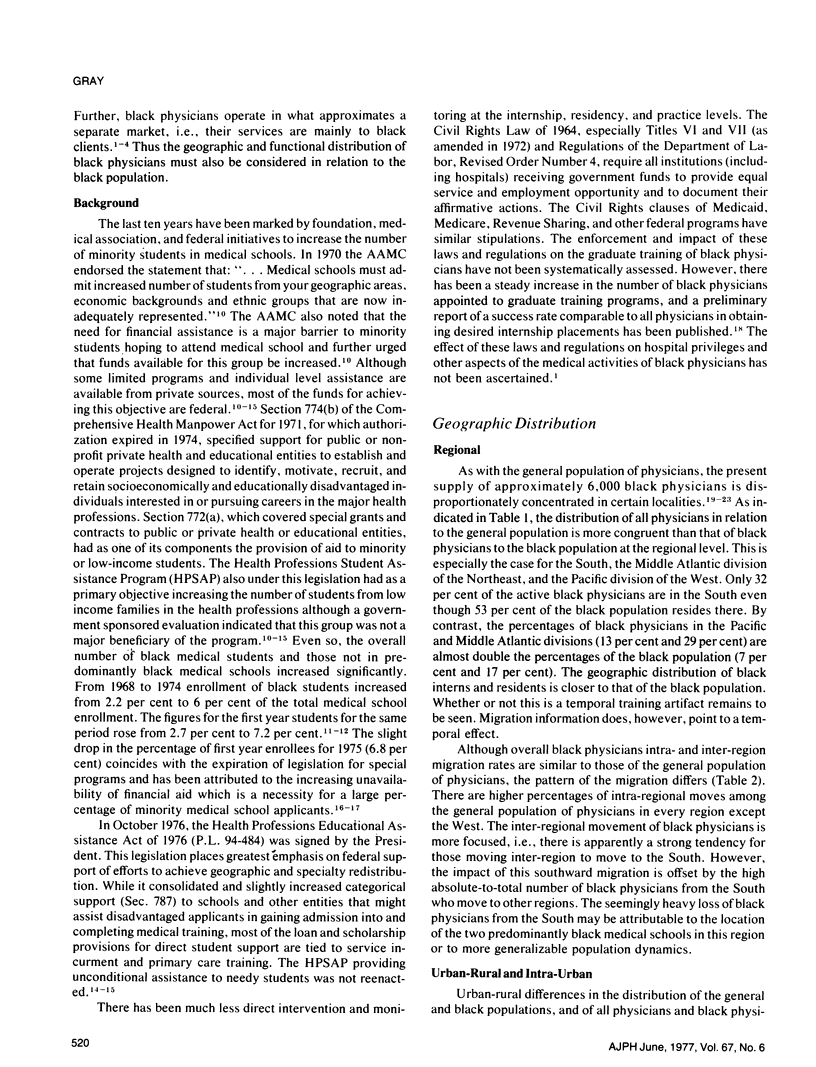
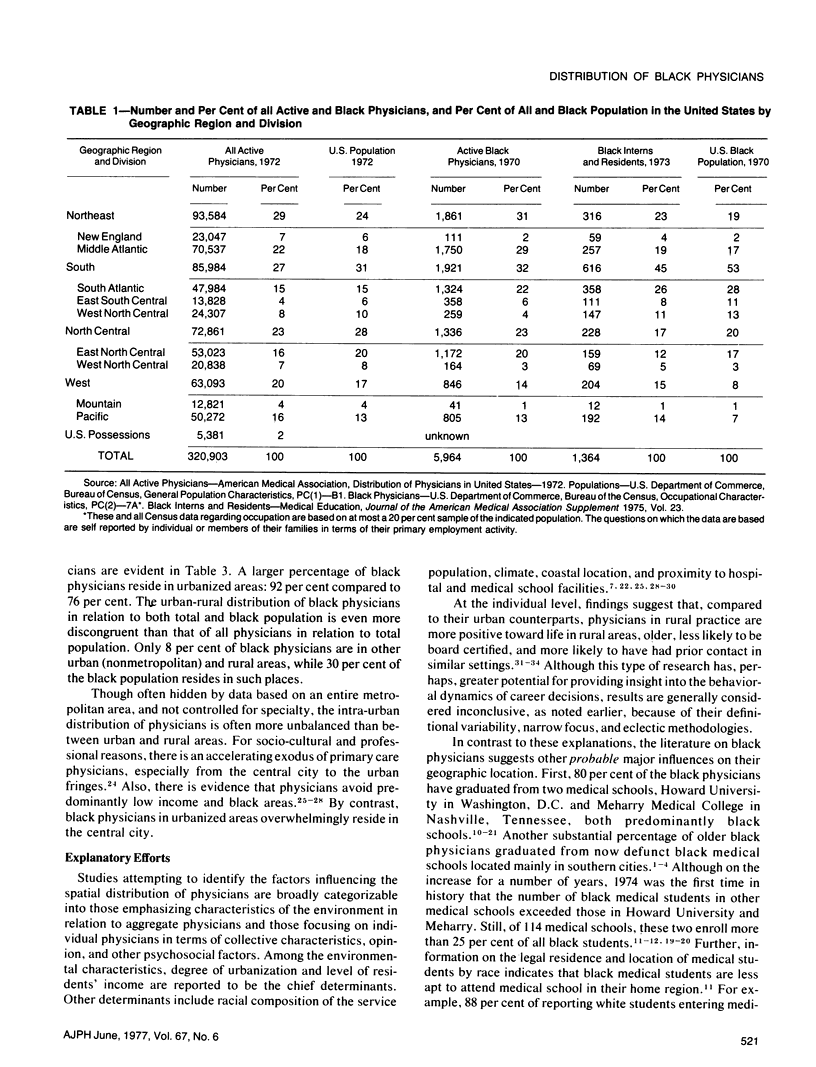
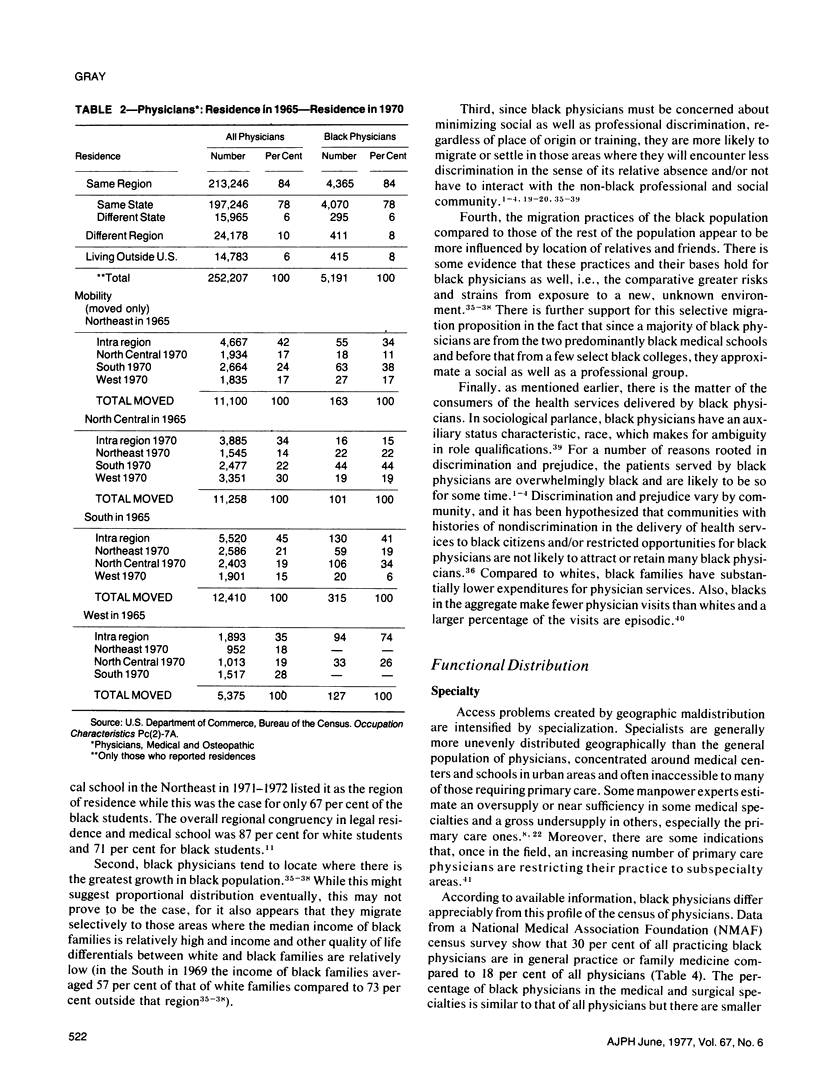
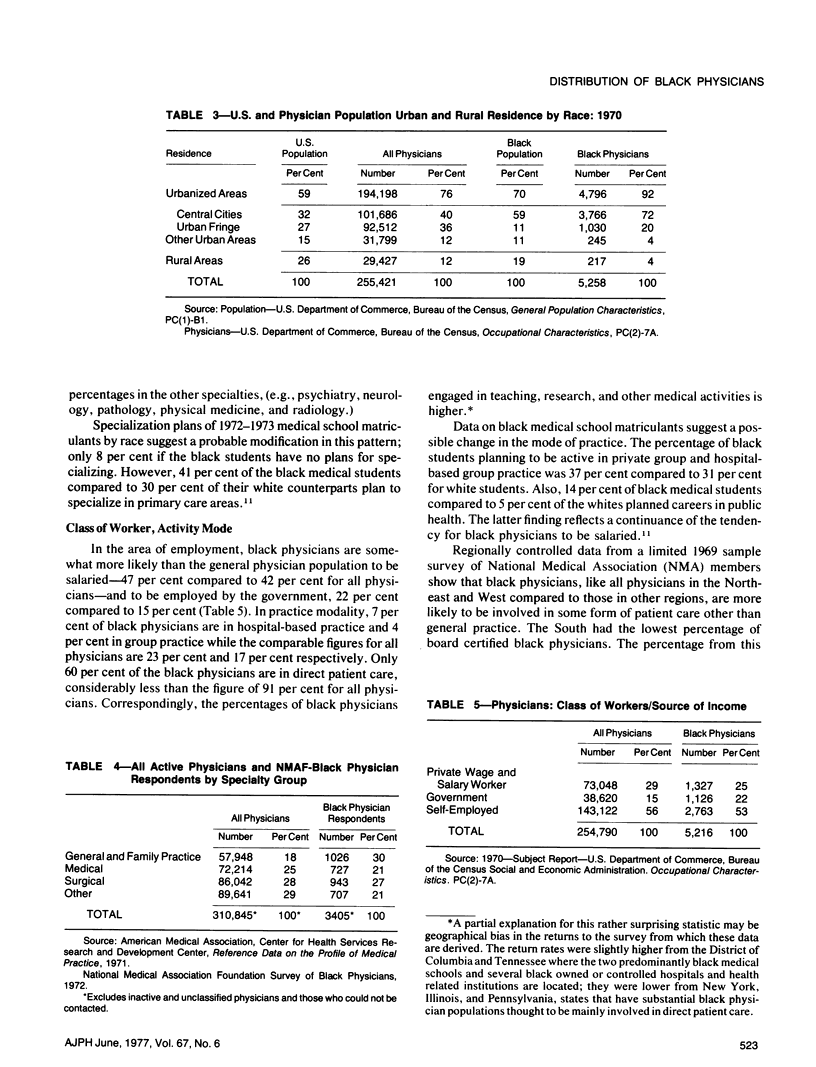
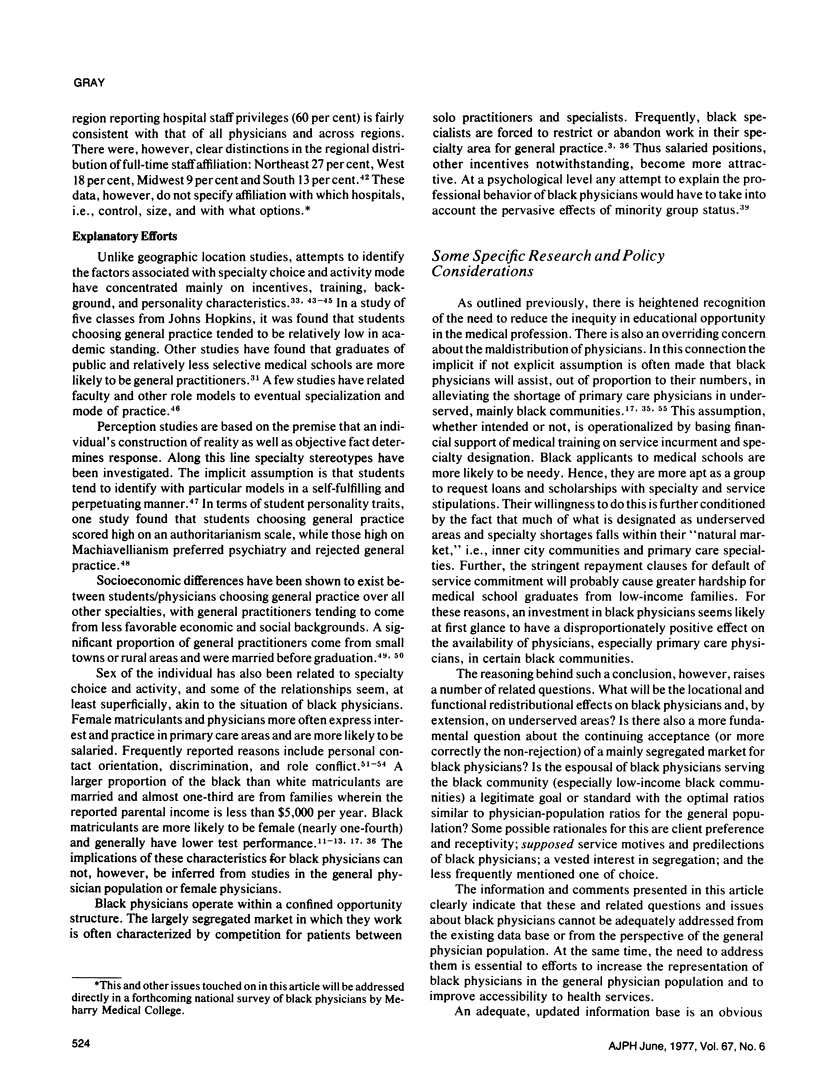
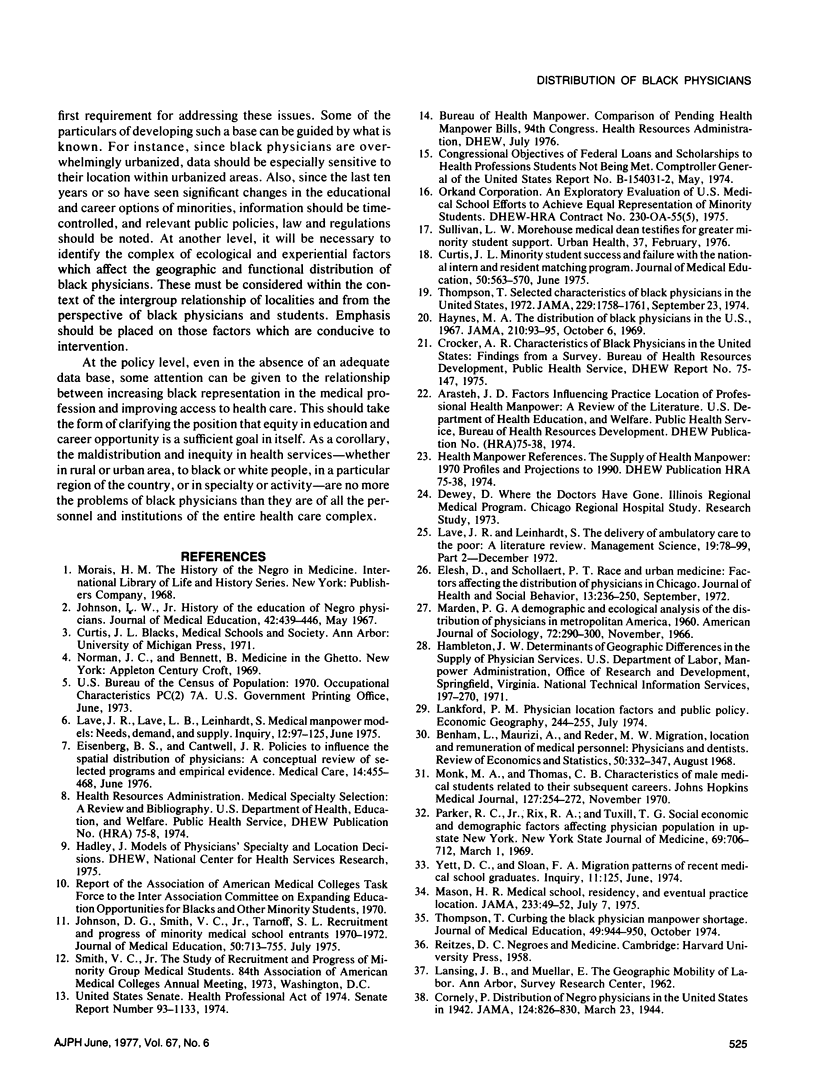
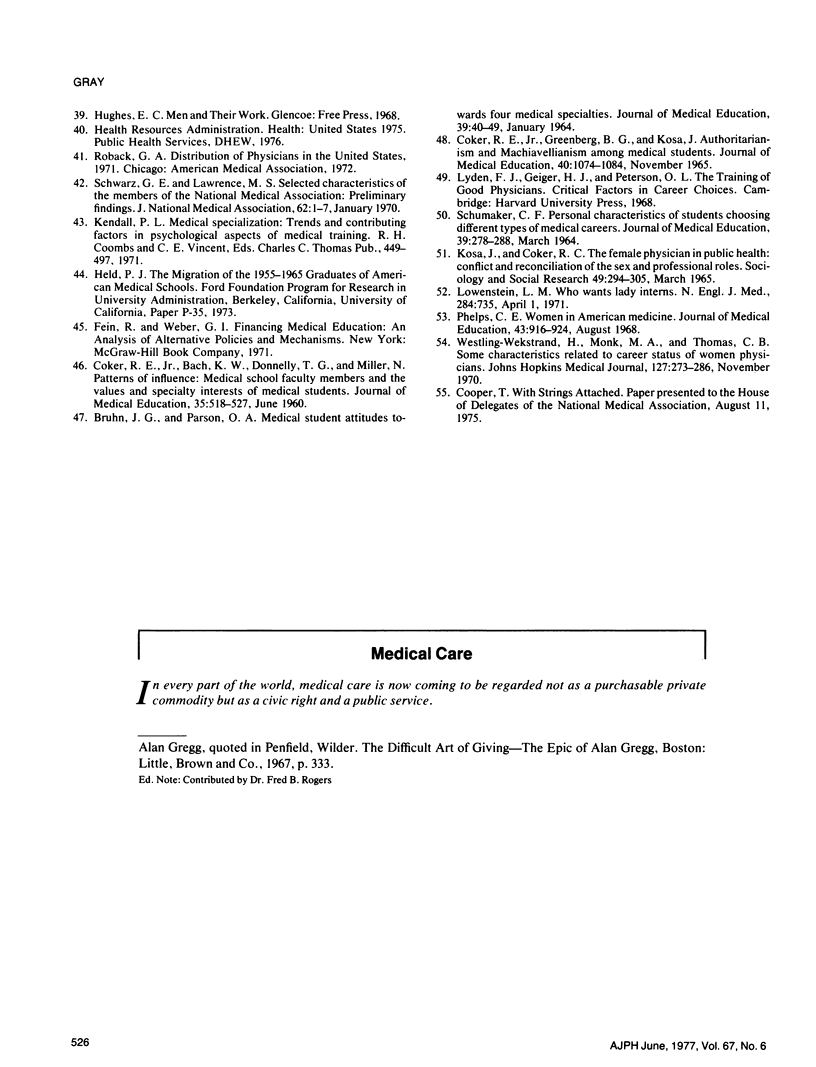
Selected References
These references are in PubMed. This may not be the complete list of references from this article.
- BRUHN J. G., PARSONS O. A. MEDICAL STUDENT ATTITUDES TOWARD FOUR MEDICAL SPECIALTIES. J Med Educ. 1964 Jan;39:40–49. [PubMed] [Google Scholar]
- COKER R. E., Jr, BACK K. W., DONNELLY T. G., MILLER N. Patterns of influence: medical school faculty members and the values and specialty interests of medical students. J Med Educ. 1960 Jun;35:518–527. [PubMed] [Google Scholar]
- Coker R. E., Jr, Greenberg G., Kosa J. Authoritarianism and Machiavellianism among medical students. J Med Educ. 1965 Nov;40(11):1074–1084. doi: 10.1097/00001888-196511000-00010. [DOI] [PubMed] [Google Scholar]
- Curtis J. L. Minority student success and failure with the National Intern and Resident Matching Program. J Med Educ. 1975 Jun;50(6):563–570. doi: 10.1097/00001888-197506000-00001. [DOI] [PubMed] [Google Scholar]
- Eisenberg B. S., Cantwell J. R. Policies to influence the spatial distribution of physicians: a conceptual review of selected programs and empirical evidence. Med Care. 1976 Jun;14(6):455–468. doi: 10.1097/00005650-197606000-00001. [DOI] [PubMed] [Google Scholar]
- Elesh D., Schollaert P. T. Race and urban medicine: factors affecting the distribution of physicians in Chicago. J Health Soc Behav. 1972 Sep;13(3):236–250. [PubMed] [Google Scholar]
- Haynes M. A. Distribution of black physicians in the United States, 1967. JAMA. 1969 Oct 6;210(1):93–95. [PubMed] [Google Scholar]
- Johnson D. G., Smith V. C., Jr, Tarnoff S. L. Recruitment and progress of minority medical school entrants 1970-1972. J Med Educ. 1975 Jul;50(7):713–755. doi: 10.1097/00001888-197507000-00015. [DOI] [PubMed] [Google Scholar]
- Johnson L. W., Jr History of the education of Negro physicians. J Med Educ. 1967 May;42(5):439–446. doi: 10.1097/00001888-196705000-00005. [DOI] [PubMed] [Google Scholar]
- Lave J. R., Lave L. B., Leinhardt S. Medical manpower models: need, demand and supply. Inquiry. 1975 Jun;12(2):97–125. [PubMed] [Google Scholar]
- Lowenstein L. M. Who wants lady interns? N Engl J Med. 1971 Apr 1;284(13):735–735. doi: 10.1056/NEJM197104012841336. [DOI] [PubMed] [Google Scholar]
- Marden P. G. A demographic and ecological analysis of the distribution of physicians in metropolitan America, 1960. AJS. 1966 Nov;72(3):290–300. doi: 10.1086/224297. [DOI] [PubMed] [Google Scholar]
- Mason H. R. Medical school, residency, and eventual practice location. Toward a rationale for state support of medical education. JAMA. 1975 Jul 7;233(1):49–52. [PubMed] [Google Scholar]
- Monk M. A., Thomas C. B. Characteristics of male medical students related to their subsequent careers. Johns Hopkins Med J. 1970 Nov;127(5):254–272. [PubMed] [Google Scholar]
- Parker R. C., Jr, Rix R. A., Tuxill T. G. Social, economic, and demographic factors affecting physician population in upstate New York. N Y State J Med. 1969 Mar 1;69(5):706–712. [PubMed] [Google Scholar]
- Phelps C. E. Women in American medicine. J Med Educ. 1968 Aug;43(8):916–924. doi: 10.1097/00001888-196808000-00006. [DOI] [PubMed] [Google Scholar]
- SCHUMACHER C. F. PERSONAL CHARACTERISTICS OF STUDENTS CHOOSING DIFFERENT TYPES OF MEDICAL CAREERS. J Med Educ. 1964 Mar;39:278–288. [PubMed] [Google Scholar]
- Schwarz G. E., Lawrence M. S. Selected characteristics of the members of the National Medical Association: preliminary findings. J Natl Med Assoc. 1970 Jan;62(1):1–7. [PMC free article] [PubMed] [Google Scholar]
- Thompson T. Curbing the black physician manpower shortage. J Med Educ. 1974 Oct;49(10):944–950. doi: 10.1097/00001888-197410000-00003. [DOI] [PubMed] [Google Scholar]
- Thompson T. Selected characteristics of black physicians in the United States, 1972. JAMA. 1974 Sep 23;229(13):1758–1761. [PubMed] [Google Scholar]
- Westling-Wikstrand H., Monk M. A., Thomas C. B. Some characteristics related to the career status of women physicians. Johns Hopkins Med J. 1970 Nov;127(5):273–286. [PubMed] [Google Scholar]
- Yett D. E., Sloan F. A. Migration patterns of recent medical school graduates. Inquiry. 1974 Jun;11(2):125–142. [PubMed] [Google Scholar]


